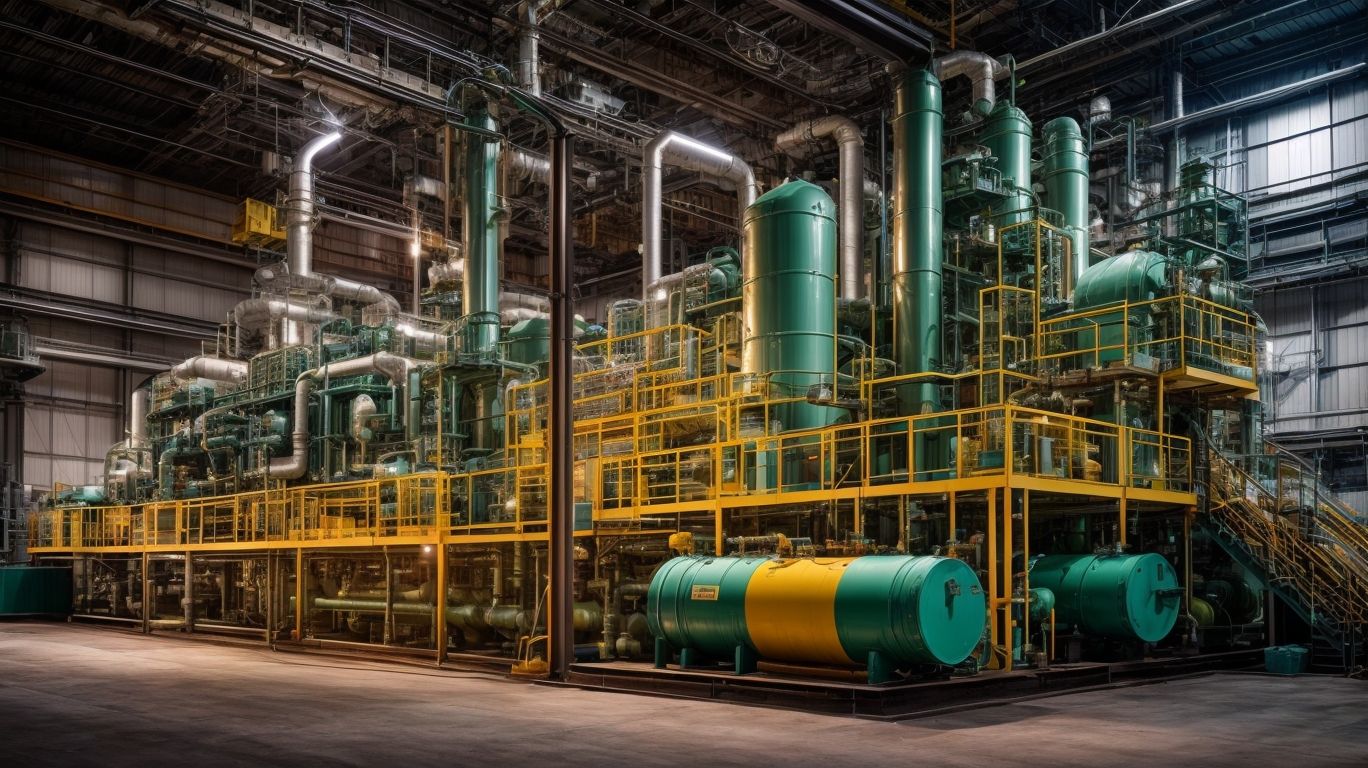Ethylene production is a vital process in the petrochemical industry, as it is used to produce a wide range of products such as plastics, fuels, and synthetic materials. Ethylene is a flammable, colorless gas that has a pungent odor and is highly reactive. In this ultimate guide, we will explore everything you need to know about ethylene production, from its process and uses to its environmental impacts and future developments.
Ethylene is primarily produced through the thermal cracking of hydrocarbons, such as natural gas, naphtha, and ethane, in a process known as steam cracking. This process involves heating the hydrocarbons at high temperatures (around 850-1000°C) in the presence of steam. This results in the formation of ethylene gas, along with other by-products such as propylene, butadiene, and benzene.
Apart from steam cracking, there are other methods used for ethylene production, such as ethanol dehydration and catalytic dehydrogenation. These methods differ in their raw materials, energy consumption, and production yield. The main raw materials used in ethylene production are natural gas, naphtha, and ethane, which are derived from crude oil or natural gas.
The uses of ethylene are vast and diverse, ranging from plastic production to fuel additives and antifreeze. It is the building block for many essential products in various industries such as automotive, packaging, construction, and healthcare. In agriculture, ethylene is used as a ripening agent for fruits and vegetables.
However, the production of ethylene is not without its environmental impacts. The thermal cracking process emits large amounts of carbon dioxide, contributing to climate change and air pollution. Therefore, there are regulations in place, such as the Kyoto Protocol, to limit and monitor the greenhouse gas emissions from ethylene production.
Safety measures in the ethylene production process are crucial due to the flammability and reactivity of the gas. Companies follow strict protocols in handling and storing ethylene, as well as implementing safety procedures and equipment to prevent accidents.
In the future, there are developments in ethylene production to make it more sustainable and environmentally friendly. These include utilizing renewable energy sources, developing new technologies for ethylene production, and finding alternative feedstocks. These advancements will not only reduce the environmental impact of ethylene production but also make it more cost-effective and efficient for companies.
Key Takeaways:
What is Ethylene Production?
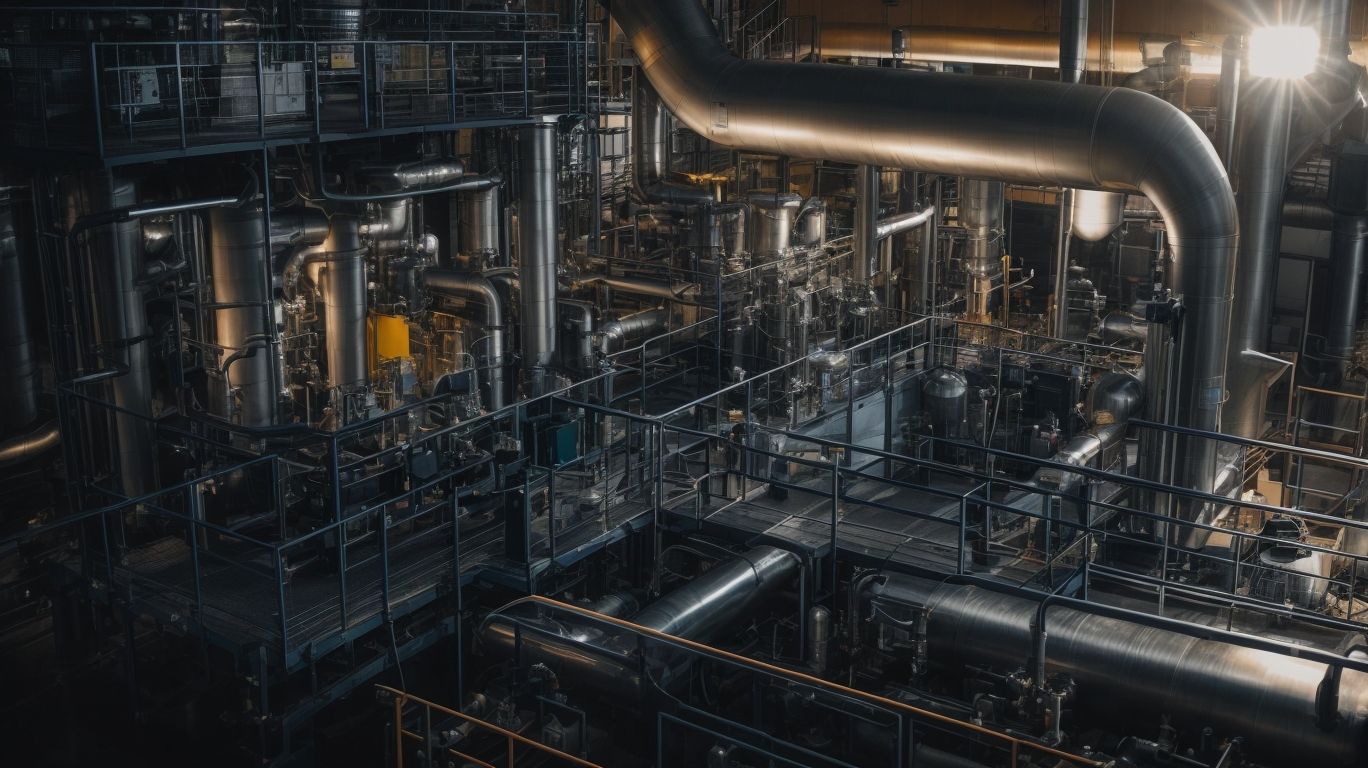
Photo Credits: Chemicalglossary.Net by Jerry Thomas
Ethylene production is the crucial process of creating ethylene, an important chemical used in various industries. This process involves steam cracking hydrocarbon feedstocks like ethane or naphtha, where the feedstock is heated to high temperatures, causing it to break down into smaller molecules, including ethylene.
Ethylene production is a crucial step in the production of plastics, synthetic fibers, and other essential chemicals, playing a vital role in the petrochemical industry and contributing to the development of products that are an integral part of our daily lives.
How is Ethylene Produced?

Photo Credits: Chemicalglossary.Net by Christopher Clark
Ethylene production involves a complex process that consists of several steps. Here is a simplified list of the steps required to produce ethylene:
- Feedstock Preparation: Ethylene is typically produced from hydrocarbon feedstocks, such as ethane, propane, or naphtha.
- Cracking: The feedstock undergoes thermal cracking in a furnace, where it is heated to high temperatures to break down the hydrocarbon molecules.
- Separation: The cracked gas is then cooled and separated to eliminate impurities and isolate ethylene from other hydrocarbons.
- Purification: The separated ethylene undergoes further purification processes to eliminate any remaining impurities.
- Compression: The purified ethylene is compressed to increase its pressure, making it easier to transport and store.
- Storage and Distribution: The compressed ethylene is stored in tanks or transported via pipelines to facilities where it can be used for various applications.
Having an understanding of how ethylene is produced is crucial for industries that heavily rely on this versatile chemical compound.
What are the Different Methods of Ethylene Production?
There are multiple techniques used for ethylene production, each with its own set of advantages and disadvantages. The most commonly used method is steam cracking, where hydrocarbon feedstocks such as ethane or naphtha are heated to high temperatures to break them down into smaller molecules, including ethylene. Another approach is catalytic cracking, which involves utilizing a catalyst to accelerate the cracking process. Other methods include oxidative coupling of methane and methanol-to-olefins. Each method requires specific raw materials and conditions for optimal production. Pro-tip: Consider the availability of feedstocks and the environmental impact when deciding on a method for ethylene production.
What are the Raw Materials used for Ethylene Production?
Ethylene production relies on specific raw materials to generate this crucial chemical compound. The primary raw material used for ethylene production is ethane, which is a component of natural gas. Other raw materials that can be utilized include propane and butane. These raw materials are typically obtained through natural gas processing or petroleum refining processes. The availability and cost of these raw materials play a significant role in the production of ethylene.
By utilizing these raw materials, industries can produce ethylene, which is a vital building block for various products in industries such as plastics, packaging, and automotive.
What are the Uses of Ethylene?

Photo Credits: Chemicalglossary.Net by Eric Brown
Ethylene, a crucial chemical compound, has various uses across different industries. Let’s take a look at some key applications of ethylene:
- Plastics production: Ethylene is a key ingredient in the production of plastics such as polyethylene, which is used to make packaging, pipes, and containers.
- Chemical intermediates: Ethylene serves as a building block for manufacturing other chemicals, including ethanol, ethylene oxide, and vinyl chloride.
- Agriculture: Ethylene is used to regulate the ripening of fruits, improve fruit quality, and increase crop yield.
- Automotive industry: Ethylene is utilized in the production of antifreeze and as a fuel additive.
- Textile industry: Ethylene is employed in the manufacturing of synthetic fibers like polyester.
Pro-tip: Due to its versatility, ethylene is an essential compound in various industries, contributing to the production of everyday items we rely on.
What Industries Rely on Ethylene Production?
Industries across various sectors heavily rely on ethylene production for their manufacturing processes. Some key industries include:
- Plastics: Ethylene is a fundamental component in the production of plastics, including packaging materials, containers, and plastic films.
- Chemicals: Ethylene serves as a feedstock for the production of various chemicals, such as solvents, detergents, and synthetic fibers.
- Automotive: Ethylene is used in the production of automotive components, such as tires, hoses, and gaskets.
- Construction: Ethylene is utilized in the production of construction materials, including pipes, insulation, and adhesives.
- Pharmaceuticals: Ethylene plays a role in the manufacturing of pharmaceutical products and drugs.
As the demand for these industries continues to grow, ethylene production remains vital for their operations. The development of sustainable and environmentally friendly production methods is crucial for the future of ethylene production and its impact on these industries.
How is Ethylene Used in Agriculture?
Ethylene is a widely used compound in agriculture, serving various purposes. Here are the steps involved in the use of ethylene in this field:
- Ripening agent: Ethylene is utilized to initiate the ripening process in fruits and vegetables, helping them reach their optimal maturity.
- Sprouting inhibitor: Ethylene can prevent the premature sprouting of potatoes and onions, extending their shelf life.
- Flowering stimulant: Ethylene is used to induce flowering in certain plants, promoting their reproductive growth.
- Senescence inhibitor: Ethylene is employed to slow down the aging process in cut flowers, prolonging their vase life.
- Plant stress response: Ethylene aids plants in responding to stress factors such as drought, flooding, and disease.
These applications demonstrate the significant role of ethylene in enhancing agricultural practices and ensuring the quality and productivity of crops.
What are the Environmental Impacts of Ethylene Production?
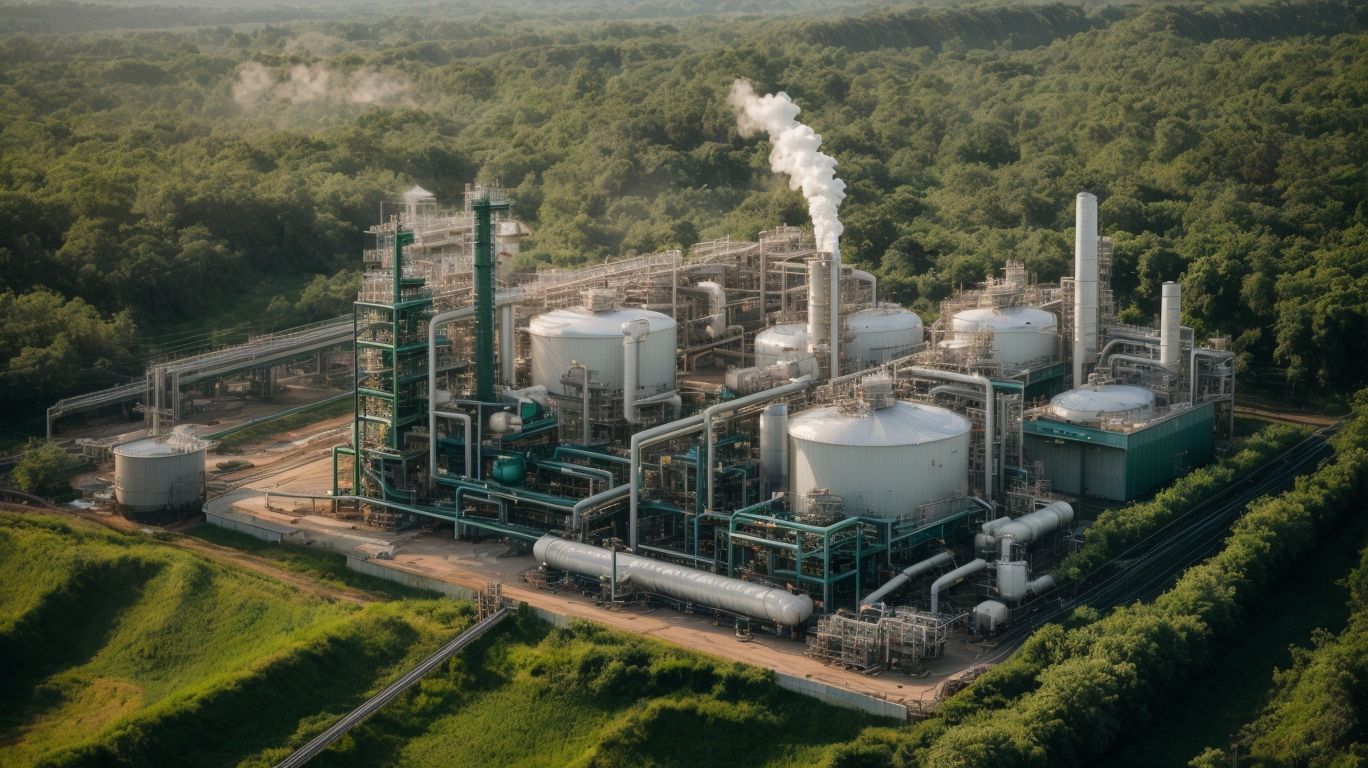
Photo Credits: Chemicalglossary.Net by Jack Hernandez
The production of ethylene has significant environmental impacts that should be taken into consideration. These include greenhouse gas emissions, air pollution, water pollution, and waste generation. The processes involved in producing ethylene, such as steam cracking of hydrocarbons, release large amounts of carbon dioxide and other greenhouse gases into the atmosphere. These emissions contribute to climate change and air quality issues. Furthermore, the production process can also produce hazardous air pollutants and release them into water systems. Proper management of waste generated from ethylene production, such as spent catalysts and sludge, is crucial in preventing negative environmental consequences. Overall, the environmental impacts of ethylene production emphasize the importance of implementing sustainable practices and technologies within the industry.
How Does Ethylene Production Contribute to Climate Change?
Ethylene production plays a significant role in contributing to climate change, as outlined below:
- Greenhouse gas emissions: The production process of ethylene involves the use of fossil fuels, such as natural gas or petroleum, which emit carbon dioxide and other greenhouse gases into the atmosphere.
- Energy consumption: Significant amounts of energy, often derived from fossil fuels, are required for ethylene production. The extraction, processing, and transportation of these fuels also contribute to carbon emissions.
- Byproduct emissions: The production of ethylene can also result in the release of other potent greenhouse gases, including methane and nitrous oxide, through various chemical reactions and waste management processes.
- Deforestation: The raw materials used in ethylene production, such as oil palm or soybean oil, can lead to deforestation, reducing the Earth’s capacity to absorb carbon dioxide and contributing to climate change.
In recent years, the impact of ethylene production on climate change has become a pressing concern, leading to efforts to adopt more sustainable practices in various industries. Steps are being taken to reduce emissions, improve energy efficiency, and explore alternative feedstocks and processes that have lower environmental footprints. Governments and organizations are implementing regulations and standards to mitigate the environmental impacts of ethylene production and promote a more sustainable future.
What are the Regulations Surrounding Ethylene Production?
Regulations surrounding ethylene production are essential for ensuring safety, environmental protection, and compliance with industry standards. These regulations may vary depending on the country and region, but they all aim to cover important aspects such as emissions control, waste management, worker safety, and transportation guidelines.
For instance, in the United States, the Environmental Protection Agency (EPA) regulates ethylene production under the Clean Air Act and Clean Water Act, which sets limits on emissions of pollutants and requires permits for certain operations. Additionally, occupational safety agencies enforce regulations to protect workers from hazards associated with ethylene production processes.
It is crucial to adhere to these regulations for responsible and sustainable ethylene production.
What are the Safety Measures in Ethylene Production Process?
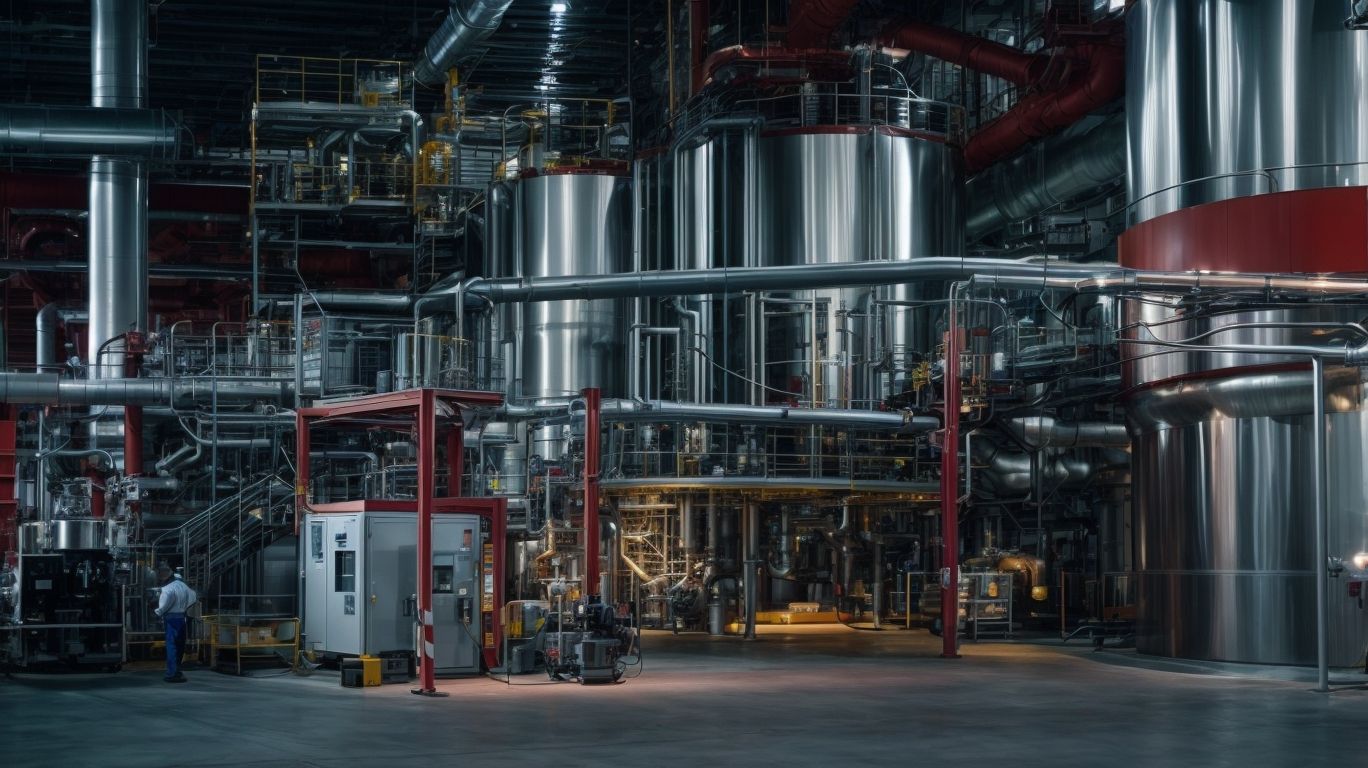
Photo Credits: Chemicalglossary.Net by Adam Johnson
Safety is of utmost importance in the ethylene production process to prevent accidents and protect workers. Here are some key safety measures that should be implemented in order to ensure a safe working environment:
- Regular inspections and maintenance of equipment should be conducted to ensure proper functioning and identify potential hazards.
- Adequate training and education should be provided to employees regarding safety protocols and emergency procedures.
- Personal protective equipment, such as helmets, goggles, gloves, and respiratory masks, should be used by all workers.
- Proper ventilation systems should be implemented to control the release of hazardous gases.
- Strict adherence to safety regulations and guidelines provided by regulatory authorities is crucial.
The devastating incident that occurred in 1984 at a chemical plant in Bhopal, India serves as a reminder of the importance of these safety measures in industrial processes, such as ethylene production. This tragic event resulted in the deaths of thousands of people and long-term health complications for many more, highlighting the need for stringent safety measures to prevent similar incidents in the future.
What are the Future Developments in Ethylene Production Process?
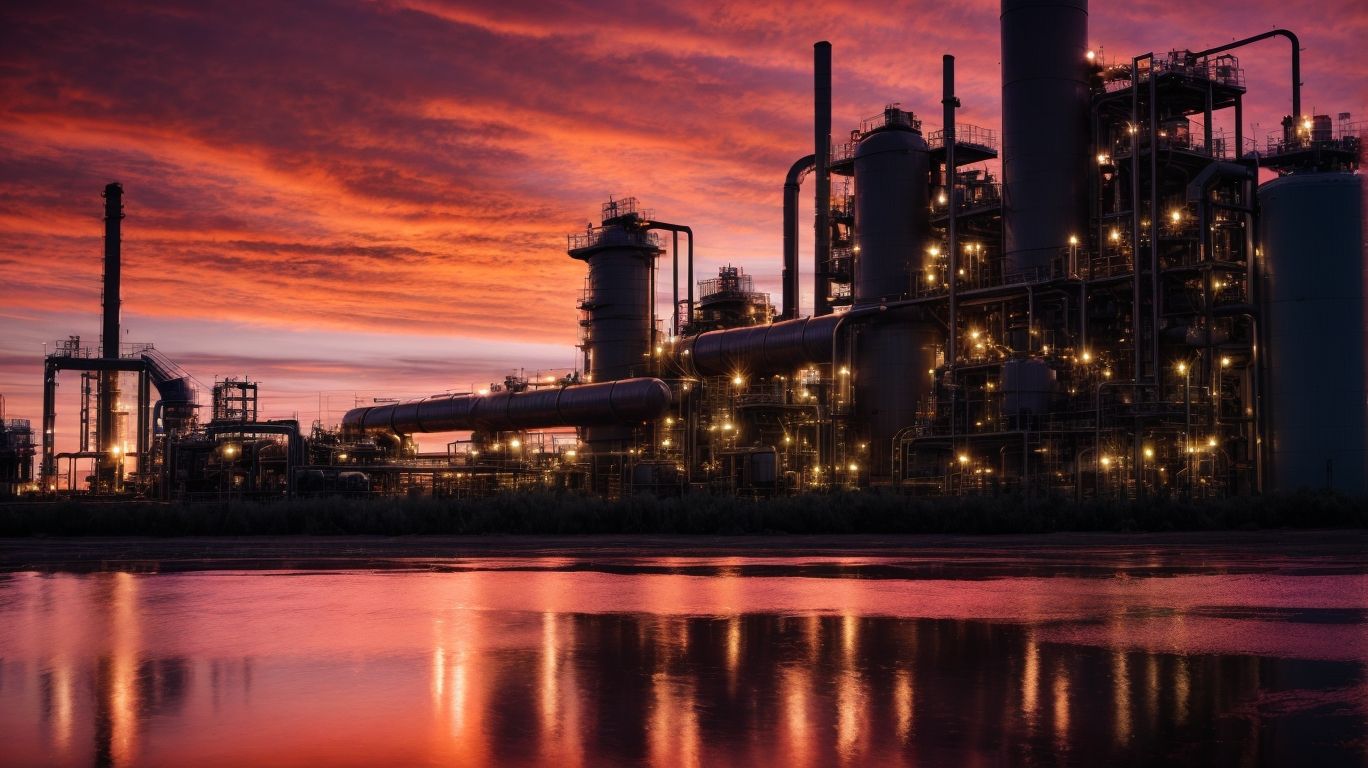
Photo Credits: Chemicalglossary.Net by Dennis White
Future developments in the ethylene production process are focused on improving efficiency, reducing environmental impact, and exploring new feedstocks. Here are some key areas of development:
- Advanced catalysts: Researchers are developing catalysts that can enhance ethylene production rates and selectivity, leading to higher yields and reduced energy consumption.
- Sustainability: Efforts are underway to develop greener processes, such as using renewable energy sources and implementing carbon capture and utilization technologies.
- Alternative feedstocks: Researchers are exploring non-petrochemical feedstocks like biomass, waste plastics, and carbon dioxide to produce ethylene, reducing reliance on fossil fuels.
- Process optimization: Continuous improvement in process design and operation is being pursued to maximize efficiency and minimize waste generation.
Pro-tip: Stay updated on the latest research and technological advancements in the field to leverage new developments for improved ethylene production.
Frequently Asked Questions
What is ethylene and why is it important in industrial production?
Ethylene is a colorless, flammable gas that is crucial in the production of resins and plastics. With an annual global production of approximately 200 million tons, it is one of the most widely used industrial organic chemicals. Ethylene is used as a monomer to create longer carbon chains and as a starting material for other two-carbon compounds, making it a key component in the production of packaging films, wire coatings, and synthetic rubber.
What is the conventional method of producing ethylene and why is there a need for alternative conversion technologies?
The conventional method of producing ethylene involves steam cracking of ethane at high pressures and temperatures, resulting in significant energy usage and carbon dioxide emissions. However, with the increasing concern over environmental impact and the limited supply of natural gas, there is a need for alternative conversion technologies that are more efficient and environmentally benign.
What is the research being conducted by Fanglin (Frank) Chen and Kevin Huang regarding ethylene production?
Fanglin (Frank) Chen and Kevin Huang, both Mechanical Engineering professors, are conducting research to develop a more efficient and environmentally friendly alternative to ethylene production. Chen has received a $2 million grant from the U.S. Department of Energy to investigate new manufacturing technologies, including chemical manufacturing, which is a major contributor to energy usage and emissions.
How does the electrochemical conversion process proposed by Chen and Huang differ from the traditional steam cracking method?
The traditional method of producing ethylene involves breaking down hydrocarbons at high temperatures and pressures. In contrast, Chen’s research aims to develop a new technology that can convert natural gas and carbon dioxide into ethylene and carbon monoxide through an electrochemical process using a unique metal-supported solid oxide cell. This technology has the potential to revolutionize the chemical manufacturing industry by utilizing renewable electricity and reducing energy input and carbon dioxide emissions.
What are the potential benefits of using the new metal-supported solid oxide cell technology in ethylene production?
The use of the metal-supported solid oxide cell technology in ethylene production has the potential to bring about significant efficiency improvements and reduce energy consumption and carbon dioxide emissions. This technology has the potential to revolutionize the chemical manufacturing industry and contribute to combatting global warming.
How does ethylene play a role in plant and fruit physiology?
Ethylene is a naturally occurring hormone in plants and fruits and has different effects depending on the concentration. In plants, ethylene acts as a growth inhibitor and promotes leaf fall, while in fruits, it promotes ripening. This makes it a crucial component in controlling the timing and quality of fruits during harvest and post-harvest processing.
